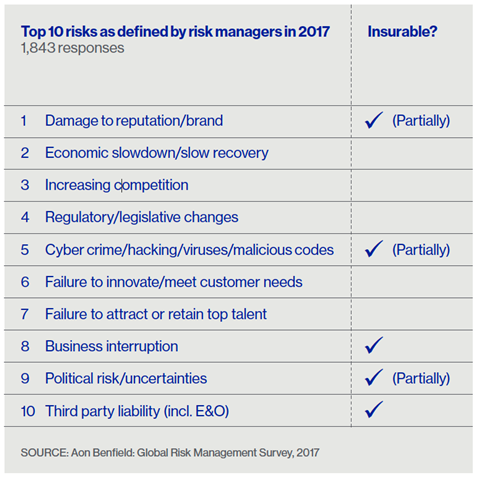The archaic 330-year-old insurance market Lloyd’s of London has announced a major overhaul - and it could just be the change that risk managers have been demanding.
For years, risk managers have been complaining that insurers only cover a fraction of the risks businesses face. It seems that message may finally have got through.
Lloyd’s once had a reputation for innovating. It was a market of entrepreneurs, taking on risks that no one else would. That forward-thinking spirit is even embodied in the building Lloyd’s inhabits: a futuristic, insides-out structure designed by Richard Rogers that rises behind a centuries-old covered market, like a spaceship that has crash landed on the set of a period drama.
On the outside of the building, underwriters and brokers zip up and down the 12-storey structure in glass capsules that belong to the realm of science fiction - not financial services.
But inside, things are a little less futuristic. The majority of business is still transacted on paper and brokers march round the market’s vast underwriting room collecting commitments from underwriters - a process that has gone unchanged since Lloyd’s was founded and one that adds huge cost to the ultimate price tag for insurance.
And that’s just for the risks that can be insured. A 2017 study found that businesses could only buy cover for five out of the top 10 risks they were facing. And, of those, three could only be partially covered.

While that is frustrating for risk managers, it is potentially fatal for insurers and Lloyd’s has finally come to recognise that.
“The issue is clear: either carry on with business-as-usual and risk becoming less relevant as customers see decreasing value in what insurance offers, or change and realise the multiple opportunities afforded by the new risk landscape,” Lloyd’s says.
In a prospectus outlining an ambitious overhaul of the market, Lloyd’s says insurers have been too slow to adapt to the new risk landscape.
“Insurance has always followed risk but as threats emerge faster, insurance must react more quickly to ensure customers get the protection they need,” it says.
It points to a significant shift in the risk profile of companies since the 1970s when 83% of the asset value of S&P500 companies was tied up in tangible assets such as property and equipment. Today, it’s just 16%.
“Intangible assets account for an increasing proportion of an organisation’s value and are vulnerable to new risks such as cyber attack and reputation damage, which require fundamentally different insurance products,” Lloyd’s says.
“Insurers must supercharge innovation if the industry is to create products and services relevant to today’s customers’ needs.’
In a challenge to the insurers that operate within its market, Lloyd’s said: “What would it take to create products and services that address more of the top 10 risks identified by risk managers?”
To cut costs, Lloyd’s says insurers need to get closer to the end customer to strip out a huge portion of the expense ratio, which has neared 40% of the cost of cover in recent years. That compares unfavourably to the average 4%-13% cost for an equity IPO, for example.
“Large corporations are increasingly retaining risk on their own balance sheets because it is more efficient to do so,” Lloyd’s explains.
“This is unsurprising,” it says, “given the scale of these corporations, the expense of risk transfer and the fact that half of S&P500 equity is in industries with a lower cost of capital than P&C insurance”
But it challenges insurers to halve the cost of placing policies, saying that reducing administration and acquisition costs must be a priority.
Meanwhile, Lloyd’s said insurers should embrace what it describes as an “opportunity” resulting from the influx of alternative capital in the market which has driven down prices and spurred competition.
“As a capital-dependent industry, insurers must make it easier for new forms of capital to attach to risk, thereby offering customers better value,” it says.
Lloyd’s points to its role in the global economy saying it underwrites risks in more than 200 countries and have paid claims of over £200bn so far this century alone, as calls now a “once-in-a-generation opportunity” to confront these challenges head on.
To do that, Lloyd’s has proposed dividing its business in two, distinguishing between the complex specialist risks that the market is known for and the run-of-the-mill products that have become commoditised in recent years.
For those standard risks, an online system has been proposed that would mean risks “can be placed in minutes at a fraction of today’s costs”.
Meanwhile, Lloyd’s is proposing a “next generation” automated claims service that will speed up settlements and, the market hopes, increase trust in insurers.
“Imagine a world in which a claim is paid before the customer realises they have experienced a loss,” Lloyd’s says. All eyes are on Lloyd’s new CEO, John Neal, who has launched the initiative, to see whether he can rekindle the market’s innovative spirit to turn fantasy into reality.




















No comments yet